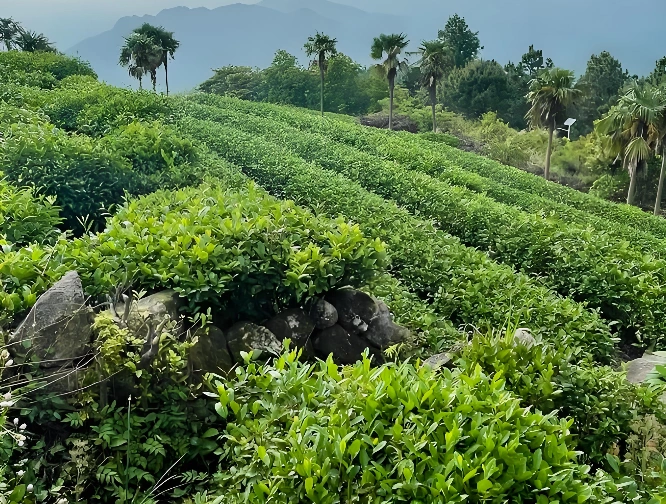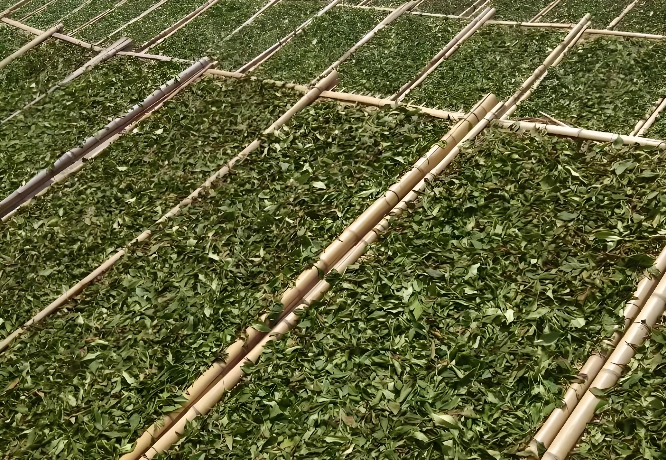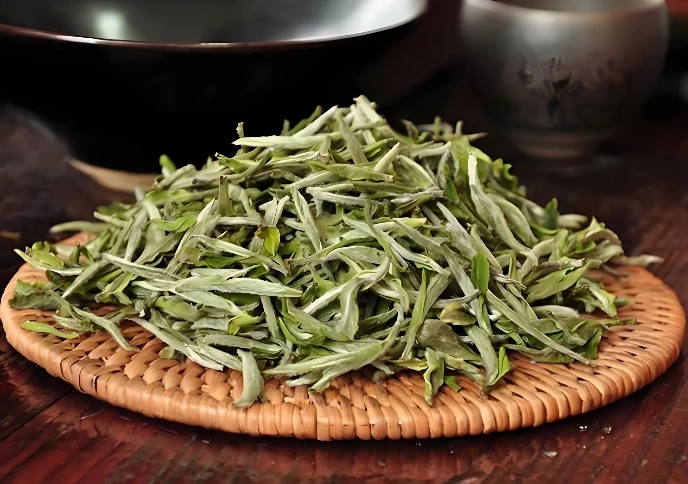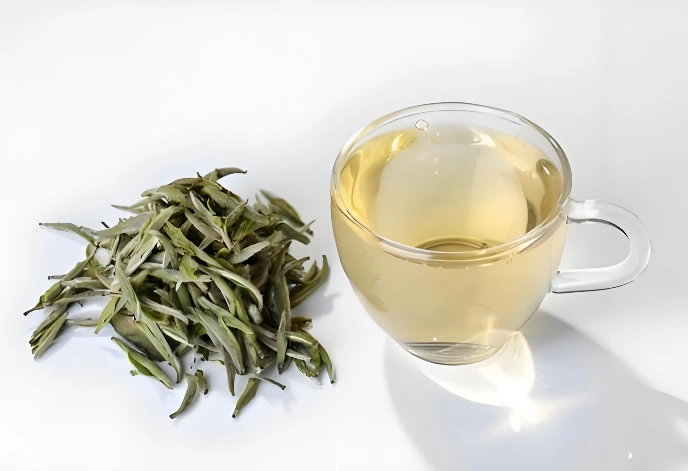Chinese white tea greets you with a soft whisper of silvery buds and pale-golden liquor, inviting you into a world where ancient tradition meets modern well-being. Imagine cradling a delicate porcelain cup that releases a subtle floral aroma, soothing your senses even as potent antioxidants and nurturing compounds flow through your body. In this journey, we’ll uncover the origins, varieties, processing secrets, flavor nuances, and remarkable health virtues of Chinese white tea—guiding you to sip, savor, and embrace its holistic magic.

What Is Chinese White Tea?
At its essence, Chinese white tea is the least-processed form of Camellia sinensis, beloved for its purity and gentle character. Only the young, down-covered buds and the tiniest top leaves are hand-picked before oxidation can begin. Rather than steaming or pan-firing, these tender shoots undergo just withering and low-heat drying. This minimalist approach preserves the full spectrum of catechins, polyphenols, amino acids, vitamins, and trace minerals—making each leaf a microcosm of nature’s bounty.
Major Varieties of Chinese White Tea
1. Fuding White Tea
Hailing from Fujian’s misty mountains, Fuding white tea is often called the “mother of white teas.” It yields famous styles like Baihao Yinzhen (Silver Needle)—pure bud teas with a silvery appearance—and Baimudan (White Peony), which combines buds and leaves for a richer flavor.
2. Zhenghe White Tea
From a cooler, higher-elevation terroir, Zhenghe white teas—also known as “Zhengshan”—offer a brisker, more herbaceous profile. Their unique processing gives them a faintly smoky nuance alongside sweet, honeyed notes.
3. Yunnan White Tea
While Fujian reigns supreme, Yunnan province contributes its own white teas harvested from wild or ancient tea trees. Yunnan white tea often boasts earthier undertones, with a deep, amber liquor and a satisfying, lingering sweetness.

Processing & Production Methods
Across regions, the heart of Chinese white tea production lies in two gentle steps:
- Withering: Freshly plucked buds and leaves are spread out—often in shaded bamboo trays—to wilt slightly under cool, circulating air. This slowly reduces moisture and kick-starts subtle enzymatic changes.
- Low-Heat Drying: Once pliable, tea is moved to warm, well-ventilated rooms or drying racks. Temperatures rarely exceed 40–50 °C, preserving fragile polyphenols and preventing bitterness.
Minor variations—like rotating leaves, using charcoal heaters, or exposing them briefly to sunlight—create distinctive regional signatures that experienced tasters can identify at first sip.
Flavor Profiles & Tasting Notes
A well-brewed cup of Chinese white tea dazzles the palate with layers of nuance:
- Appearance: Translucent pale straw to light amber.
- Aroma: Whispers of spring flowers—orchid, jasmine, and honeysuckle—mingled with fresh hay and toasted almond.
- Taste: Soft sweetness up front, yielding to silky body and a long, clean finish. Subtle notes of melon, chamomile, or wild honey may arise depending on variety and terroir.
- Mouthfeel: Silky, almost creamy, with a gentle astringency that leaves you refreshed rather than puckered.

Health Benefits of Chinese White Tea
Renowned not only for its sensory charm but also for white tea health benefits, Chinese white tea has earned acclaim among researchers and wellness enthusiasts alike.
- Antioxidant Power:
- Rich in EGCG and related catechins, Chinese white tea neutralizes free radicals, protecting cells from oxidative stress and DNA damage. A 2022 review in Antioxidants highlights these polyphenols’ ability to modulate inflammatory pathways and support cellular repair .
- Immune & Detox Support:
- Incorporating white tea in detox programs can enhance liver enzyme activity and gently promote toxin elimination. Its polyphenols also boost natural killer cell function, making white tea for immune support a refreshing daily ally.
- Metabolic & Cardiovascular Health:
- Studies suggest habitual white tea consumption may help regulate blood lipid profiles and improve insulin sensitivity—benefits that position white tea for diabetes management and heart health center stage.
- Liver Protection:
- Animal studies demonstrate that white tea polyphenols protect hepatic cells from fat accumulation and oxidative injury, fostering white tea and liver health by maintaining balanced enzyme markers and healthy liver function.
- Skin & Anti-Aging:
- Beyond the body’s interior, the antioxidants in Chinese white tea support collagen integrity and combat UV-induced damage, promoting a radiant, youthful complexion.
Optimal Brewing & Preparation
To unlock the full spectrum of Chinese white tea virtues:
- Water Temperature: 75–85 °C (167–185 °F). Avoid boiling water, which can scald delicate leaves and destroy antioxidants.
- Steeping Time: 3–5 minutes for the first infusion; extend to 6–8 minutes for subsequent brews.
- Leaf Quantity: 2–3 grams per 150 ml (5 oz) water. Adjust to taste.
- Multiple Infusions: High-quality leaves can yield 3–5 rich infusions, each revealing new layers of aroma and flavor.
- Cold Brew Option: Steep leaves in refrigerator for 8–10 hours to craft a mellow, sweet infusion perfect for warm days or detox blends.

🔗 To learn more about how to make tea, check out Tanbiwencha’s YouTube video explaining how to make tea.
Cultural Significance & History
Chinese white tea carries centuries of heritage:
- Origins: First recorded in the Song dynasty (960–1279 CE), white tea was cherished by imperial courts and Buddhist monks for its purity and subtlety.
- Tea-Horse Road: Merchants once transported white tea along ancient caravan routes, exchanging it for horses and salt—a testament to its value.
- Modern Renaissance: Today, Chinese white tea enjoys global admiration, inspiring wellness trends and artisan tea ceremonies that honor its time-tested elegance.
Purchasing & Storage Tips
When seeking authentic Chinese white tea:
- Source Reputable Vendors: Look for single-origin Fujian or Yunnan teas with transparent harvesting dates and cultivars.
- Visual Inspection: Quality buds should appear silvery-white, uniformly downy, and unbroken.
- Aroma Test: Fresh leaves emit a light, sweet fragrance—avoid musty or overly vegetal notes.
- Storage: Keep tea in an airtight container, stored away from light, moisture, and strong odors. A cool, dry pantry shelf is ideal.
Conclusion
From its silvery buds to its pale-golden liquor, Chinese white tea embodies the art of minimalism—both in processing and in the serene ritual it inspires. With every sip, you’re not only indulging in a whisper of springtime flavor but also embracing a legacy of wellness: antioxidant defense, immune resilience, metabolic balance, liver support, and luminous skin. Invite this gentle elixir into your daily life and unlock the holistic magic of Chinese white tea.



